Welcome to WAV!
Anyone can be a stream monitoring volunteer. WAV monitors come from different backgrounds and volunteer for different reasons, but they all share a commitment to protecting Wisconsin’s streams and rivers. You don’t need to be a scientist to join—we’ll train you and give you the equipment, too! New WAV volunteers can get started by training to do Baseline Monitoring or Riverine Early Detector Monitoring (Project RED). No experience is necessary. We recommend ages 10 and older for getting involved in monitoring – youth must be accompanied by an adult.
Volunteers monitor wadeable streams and small rivers that can be safely entered while wearing hip waders. Many volunteers choose to monitor a stream site based on their personal interest or proximity to their home or school, or they work with a local WAV coordinator who has a list of stream sites that need water quality data. Some programs work with local and state agencies to coordinate monitoring locations.
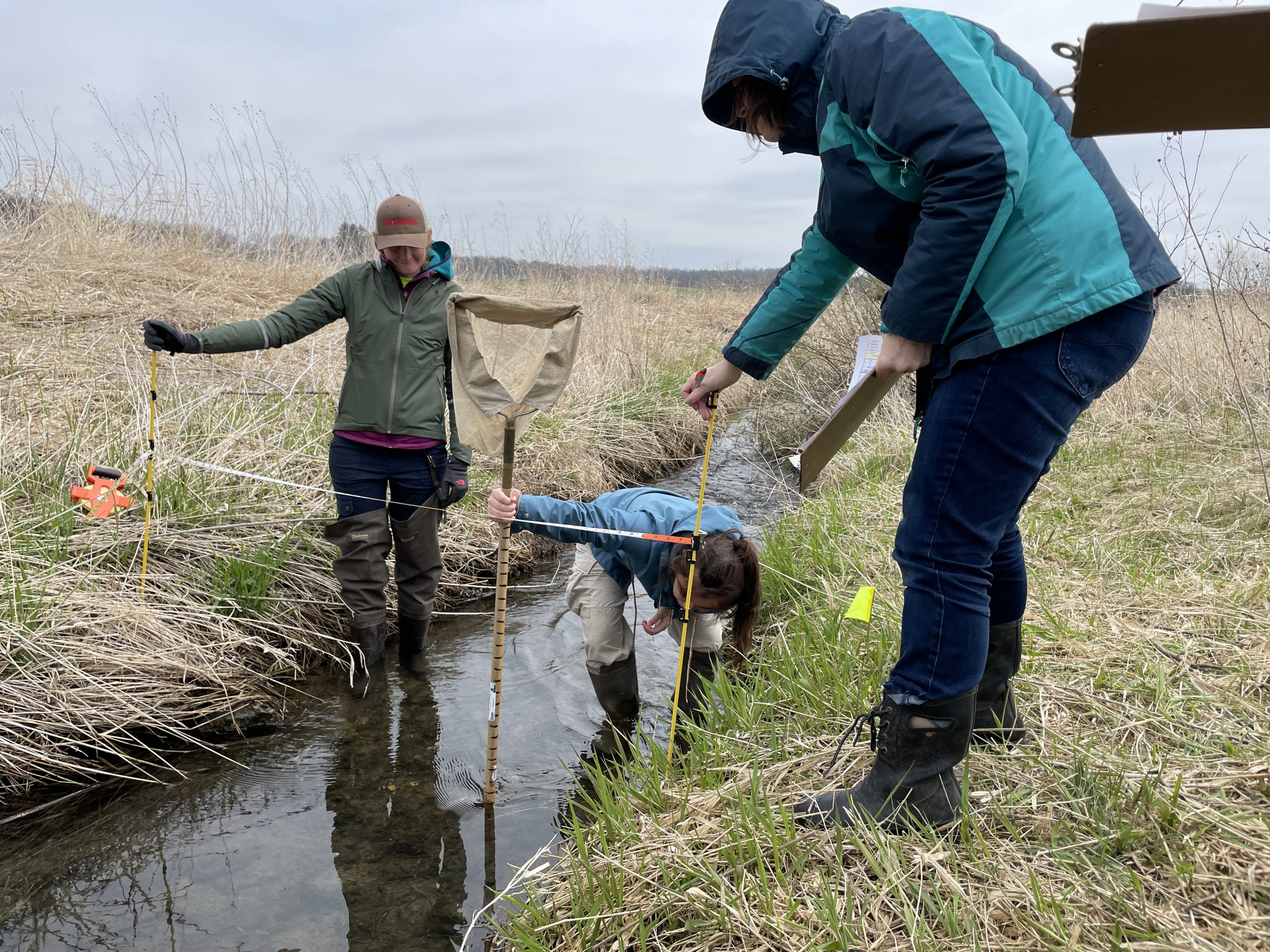
Baseline Monitoring
*Get started with the WAV program by training to be a baseline stream monitor!
Role
Baseline volunteers visit the same stream site once a month from May to October to gather baseline information about the health and water quality of the stream. With multiple years of consistent baseline data, we can better detect changes to the stream’s water quality from land use changes or restoration efforts.
- During each stream visit, volunteers collect data on four parameters: water temperature, transparency, dissolved oxygen and streamflow. Baseline volunteers also complete a biotic index to look for stream macroinvertebrates twice a year, in May and in September/October. (1.5-2 hours per month)
- Baseline volunteers monitor a stream site as part of a 2-3 person team. One team member must enter the stream to collect data. Some volunteers choose to monitor multiple stream sites in their watershed.
- Every month, one team member enters the data into the Wisconsin DNR’s SWIMS database. (15 mins per month).
How to Get Started
Before you begin monitoring, we will teach you about the five stream water quality parameters and the scientific tools and techniques that you’ll use to monitor them.
- Complete our free Online Introduction to WAV course (1-2 hours). You will learn more about the program, the science behind stream health and the process of data collection. While a prerequisite for taking the in-person field training, the course does not obligate you to become a stream monitor—although we hope you’ll be hooked! Anyone interested in learning more about water quality may take the course.
- Connect with your local WAV coordinator. WAV coordinators are staff and volunteers affiliated with land and water organizations or watershed groups who provide WAV stream monitoring programs. They offer baseline field trainings, monitoring equipment, guidance selecting a stream site, and more. Connect with a WAV Coordinator in your county:
- Register for an in-person field training at a stream near you (3.5-4 hours). In-person field trainings are held throughout the state from April–June and provide hands-on training at a stream site to teach you how to measure the five WAV parameters of stream health. Keep an eye on our Events page to see upcoming training sessions around the state and talk to your local WAV coordinator about baseline training opportunities that they provide for their WAV volunteers. We typically post our spring training schedule in March. Trainings are open to people of all abilities, and adults and youth ages 10 and older are welcome. Youth must be accompanied by an adult who can provide supervision and support.
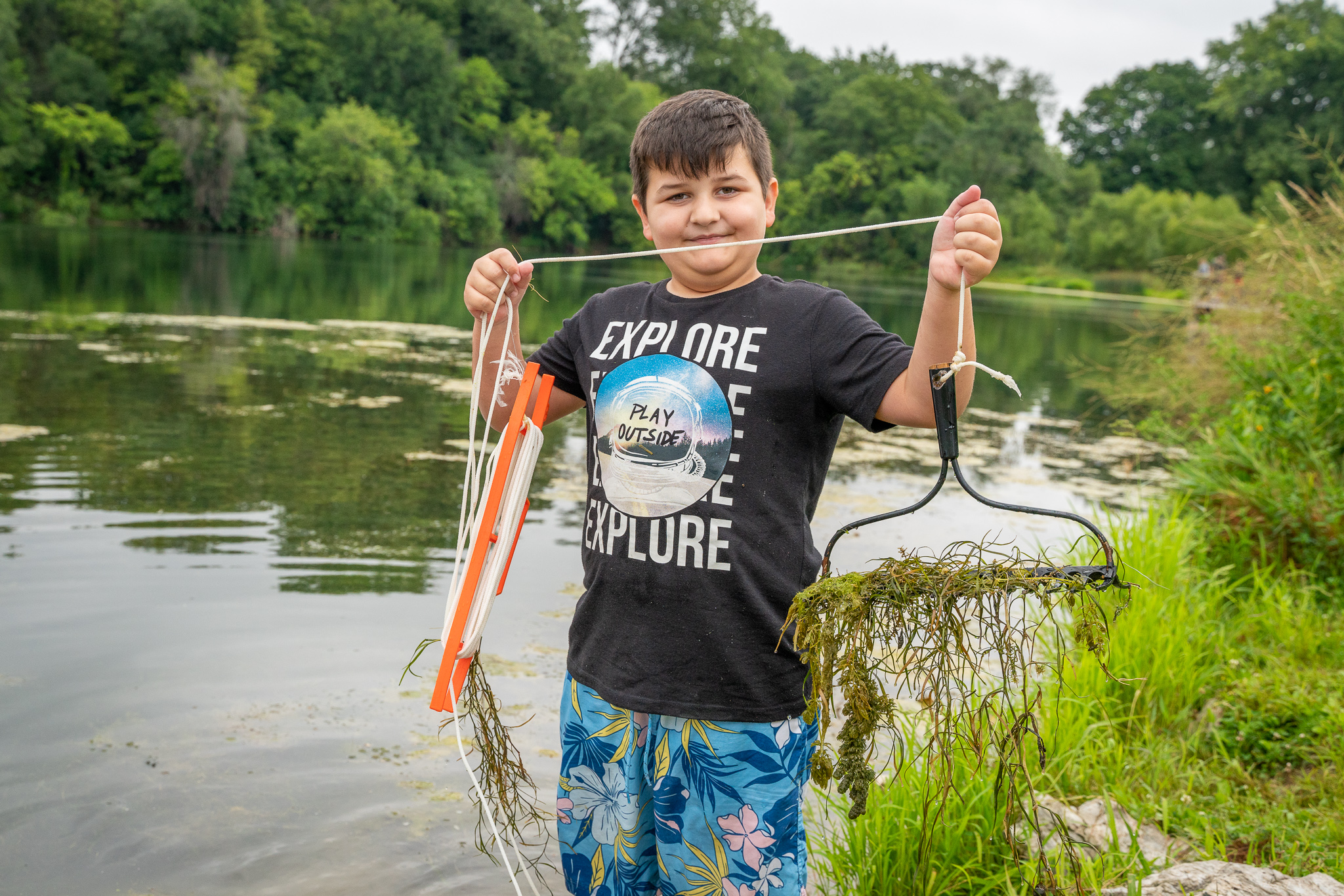
Riverine Early Detector AIS Monitoring (Project RED)
Role
Project RED volunteers monitor for aquatic invasive species (AIS) on moving waters – rivers or streams. Volunteers monitor for AIS while paddling, fishing, wading, or walking along a reach of river.
- You can monitor anywhere! You are welcome to “adopt” a section of river to keep an eye on, or monitor any river in Wisconsin you happen to be on.
- The time you spend monitoring for AIS is up to you! Any and all time dedicated to searching for AIS is appreciated.
How to Get Started
- Get familiar with AIS identification: Attend a local training or utilize online resources:
-
- For a list of local trainings, please contact wav@extension.wisc.edu
- For a list of online resources, please visit the Project RED webpage
-
- Review our monitoring manual, located on the Project RED website for information on how to monitor for AIS and what to be on the lookout for.
- Choose a waterbody to search for AIS. This can be any moving waterbody – rivers or streams!
- Get out on the water and monitor!
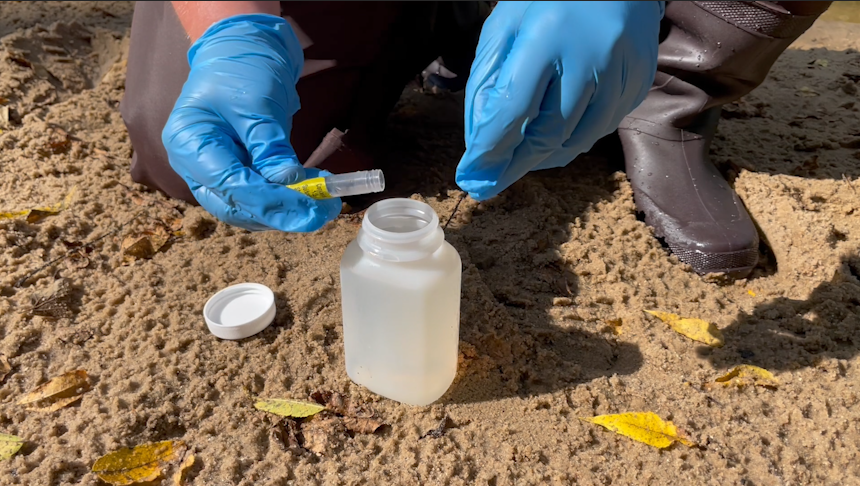
Nutrient Monitoring
*Must be a returning WAV volunteer (at least 1 year of WAV monitoring experience).
Role
Nutrient monitoring volunteers gather water quality samples once a month from May through October. Volunteers most often collect samples for total phosphorus, but sometimes collect samples for nitrogen and total suspended solids as well. Sites for nutrient monitoring are often special projects areas such as regions with TMDL or 9 Key Element Plans.
Volunteers can expect to spend about 0.5 – 1 hour(s) collecting and mailing nutrient samples each month.
How to Get Started
Volunteers must be engaged in a local coordinator or DNR-led project, and must have one year of baseline data collection completed in order to begin nutrient monitoring. To express interest in nutrient monitoring, please contact your local coordinator.
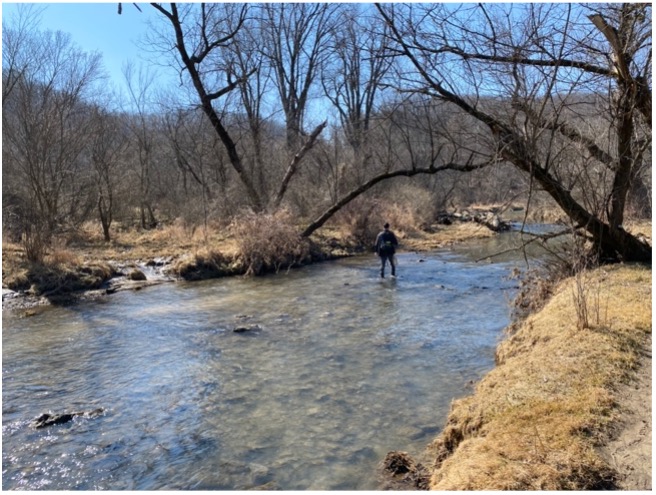
Continuous Temperature Monitoring
*Must be a returning WAV volunteer (at least 1 year of WAV monitoring experience).
Role
Continuous temperature monitoring volunteers deploy devices called “thermistors” in order to monitor the temperature of the stream once per hour from May through October.
Continuous temperature volunteers can expect to spend about 0.5 hours deploying and retrieving their thermistors in both May and October, and about 10 minutes once per month ensuring the thermistor has not moved from its deployment site.
How to Get Started
Volunteers must be engaged in a local coordinator or DNR-led project, and must have one year of baseline data collection completed in order to begin continuous temperature monitoring. To express interest in temperature monitoring, please contact your local coordinator.
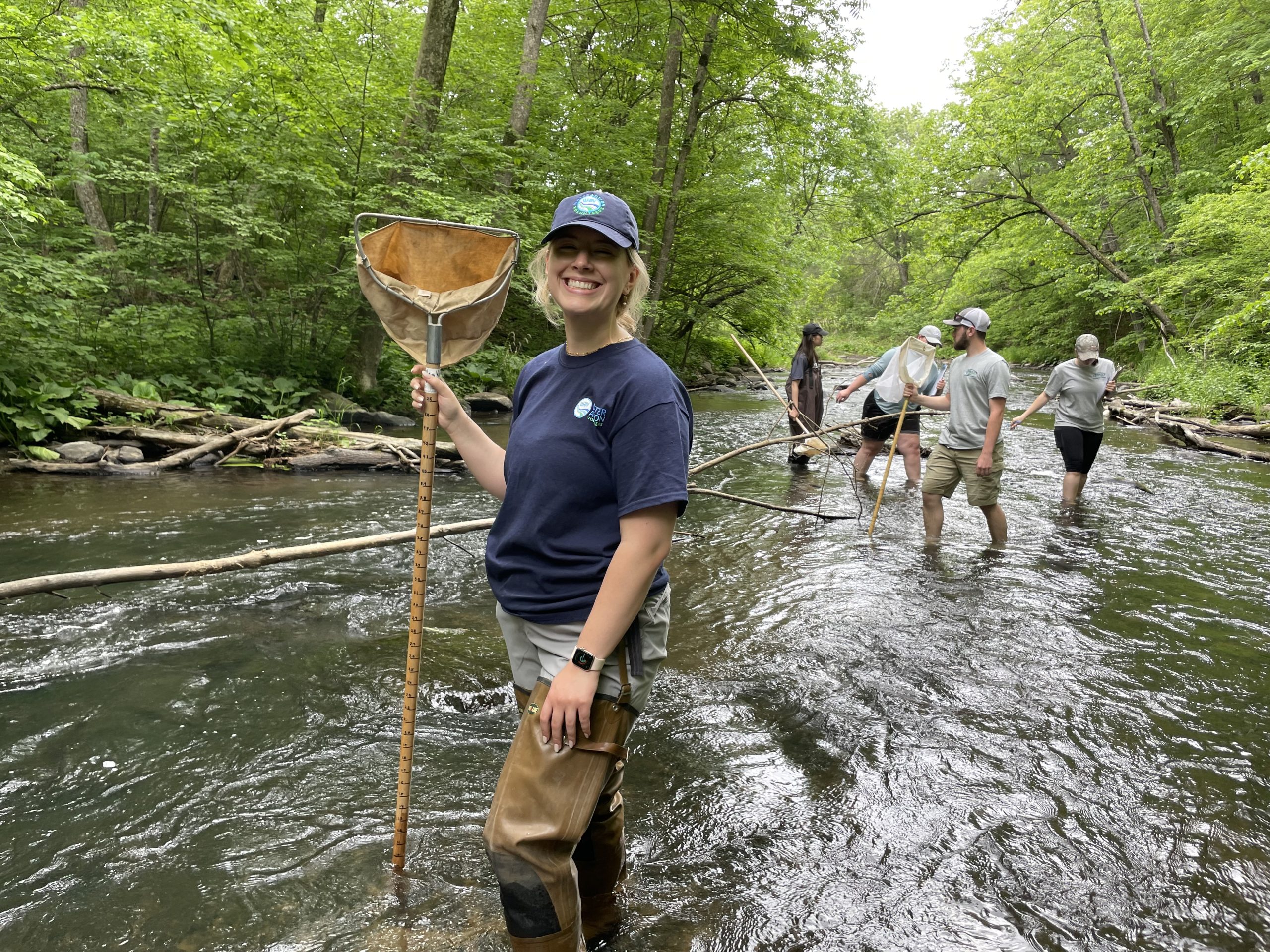
Habitat Assessment Monitoring
*Must be a returning WAV volunteer (at least 1 year of WAV monitoring experience).
Role
Current WAV volunteers may be interested in completing a habitat assessment at the stream site(s) they already monitor. A habitat assessment combines visual observation, in-stream measurements and photographs to assess the quality of the stream’s habitat for fish and other aquatic life. It’s a valuable screening tool that can identify stressors, such as bank erosion, and potential restoration opportunities.
- *Not all streams have appropriate or safe conditions for completing a WAV habitat assessment. Streams MUST be wadeable and < 33 ft wide (10m). Consult with WAV staff and you local WAV Coordinator.
- Once a year in July or August, conduct a habitat assessment at your existing stream site. (2 hours)
- This assessment requires at least two people on a team who are comfortable wading in the stream and walking on uneven surfaces on the stream bottom. Volunteers will need to walk upstream a minimum of 300 feet up to a maximum of 1,300 feet, taking in-stream measurements along the way.
- Volunteers can use items in their baseline monitoring kits to conduct habitat assessments, so no additional equipment is necessary.
- One person on the team will enter the data in the Wisconsin DNR’s SWIMS database. (15 mins)
How to Get Started
Talk to your local WAV Coordinator about your interest in field training opportunities to learn the qualitative habitat assessment method. WAV began to expand habitat assessment training opportunities in 2023 in collaboration with WAV Coordinators who express interest.
- Read the WAV Habitat Assessment factsheet.
- Review the Habitat Assessment Datasheet and accompanying WAV Habitat Assessment Worksheet.
- Complete a field training for the habitat assessment method. (3 hours)